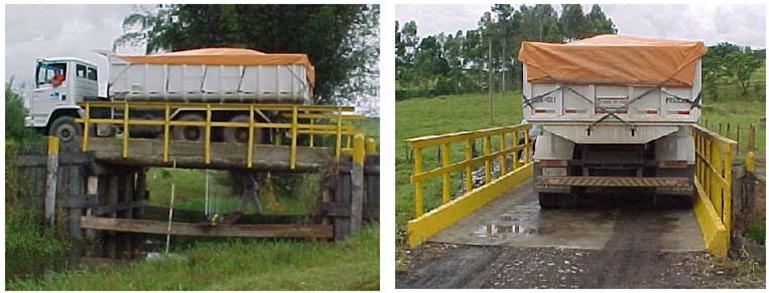Abstract
Composite structures built with sections made of wood and concrete are more durable and economic. The performance of these structures can be analysed with programmes that use the finite element method. The purpose of this study is to compare the vertical displacement obtained by the finite element method, the theoretical results found by the Orthotropic Timber Bridges programme and an experimental analysis of the Florestinhabridge. Three numerical models were performed. For models 1 and 2, timber beams with circular cross sections were applied, and for model 3, beams with a square cross section were used. The results of model 1 are close to the experimental data and present standard deviation for displacement under the central loading of ± 0.69 mm, which is 1.56% of the mean percentage error, and presents ± 0.73 mm for the lateral loading, which is 1.12% of the mean percentage error. The numerical models 1 and 2 satisfactorily represented the experimental models, demonstrating that the application of the finite element method was satisfactory for the analysis of the bridge in question.
Keywords:
Finite element method; Vertical displacement; Compositestructures; Rural constructions

 Thumbnail
Thumbnail
 Thumbnail
Thumbnail
 Thumbnail
Thumbnail
 Thumbnail
Thumbnail
 Thumbnail
Thumbnail
 Fonte:
Fonte:  Fonte:
Fonte: 

